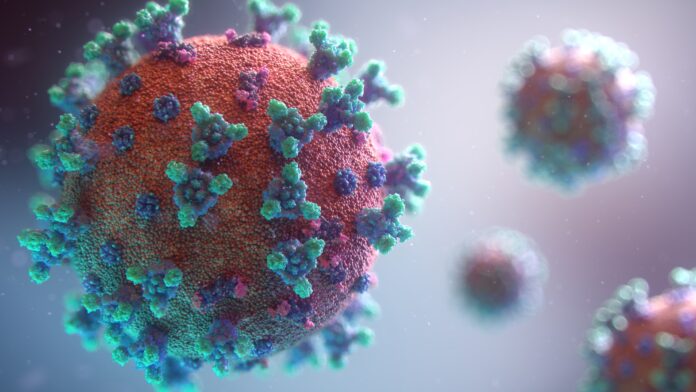I thought the days of blogging about the coronavirus every day were well behind me, but with a record number of 85,085 cases reported in the past 24 hours, it’s growing so fast that it’s hard to ignore.
While the majority of the country is not treating COVID-19 with anywhere near the same fear and trepidation that they did this spring, it’s something preppers need to monitor, both so that we can prepare for future lockdowns and to take steps to avoid catching it. I am already hearing anecdotal reports of empty shelves in local grocery stores.
Here is the news from the past 36 hours:
NBC reported more than 77,000 cases on Thursday, which made October 22 the highest total in the U.S. ever. At least until the next day, when Friday October 23 saw more than 85,000 cases, 10 percent higher than any prior peak.
Hospitalizations are also rising, and while they are at record levels in some states, particularly Wisconsin and the Dakotas, the national total is nowhere near prior records. However, hospitalizations lag tests, often by a week, and deaths lag even more. There were 925 deaths reported Friday.
I would be interested in seeing demographic data on who is getting sick and who is being hospitalized. We know the case numbers are skewing younger, but I haven’t seen much reporting on what the hospitalized population looks like.
Global Cases Also Set New Record
The world also saw a new peak, with 468,490 cases reported Thursday and 506,570 on Friday, both record days according to Johns Hopkins. The global total has exceeded 42.2 million and is on course to add 1 million cases every two days. That is an astoundingly high number when you remember that the initial outbreak saw less than 100,000 cases per day in March and not much more in April. In other words, there are four or five times as many cases now as there were when the first lockdowns and travel restrictions went into place this spring.
Europe has seen its new case numbers double in the past week. France became the 7th country to break 1 million cases, passing Spain on Thursday and Argentina on Friday to move into the number 5 spot, behind Russia. France is implementing curfews to minimize time spent in bars and restaurants. Travel bans are popping up again, making it looks like the European ski season may be in doubt.
The Czech Republic is seeing the fastest case growth of any European country with more than 14,000 cases per day. Italy, Romania and other countries are also taking steps in an attempt to curtail the spread.
Should You Self-Quarantine?
The question we must ask ourselves in the face of what is now a large outbreak is do we go into self-quarantine again? When do we go back to staying indoors and doing curb-side pickup for groceries? Should we tighten our bubbles and see fewer people? I think those days are coming again.
Right now, approximately 1 in 1,000 people in the U.S. have tested positive for COVID-19 in the past week. How many people are you exposed to every time you leave your house? What are the chances one of them has the coronavirus, and what are the odds of you catching it? If you do catch it, what are the odds that you will get sick, get hospitalized, or die?
I felt safe voting. I’m was not concerned when I went to Home Depot, but how long will that last? I say, go with your gut feeling. But if I were over 70, I’d probably lock myself down to the fullest extent possible.
Evaluating Our Odds
In our home county, there are fewer than 50 cases reported a day. In the nearby city, it’s about three times that. The county where our prepper property is located they are in the single digits per week. That sounds much safer, doesn’t it?
There are at more than 20 times as many people in our current suburban county than in the county where our prepper property is located. When you look at it on a square mile basis, the population density is much higher in our suburban county, meaning more people per square mile.
There are also far more stores, restaurants, bars, offices, sporting arenas, and movie theaters in our current area. This means more opportunities for the coronavirus to spread. At our prepper property, there are more outdoors activities and it’s pretty easy to avoid people.
From my perspective, I’d say our odds of catching COVID drop by at least a factor of 10 if we stay at our prepper property. Makes me glad we are planning to head there over Election Day
It will be interesting to see when people start pull back on activities to minimize spread. When they do, that could spark more shortages at stores, a jump in online orders, a drop in consumer spending, and more bad news for the airlines, restaurants, bars, and movie theaters.
Let us know in the comments what, if anything, you are doing in light of this surge in cases.
Pinning Blame
There are people who blame the most recent outbreak on the Sturgis motorcycle rally, and certainly the Dakotas and nearby Montana are among the hot spots, but trackers have only been able to track back a few hundred cases to the big event. Given the wide pattern of case growth, you might just as well blame it on all summer vacations.
Colleges and school reopening may be the culprit as the youth appear to be silent carriers, carrying COVID-19 home to their parents and grandparents. Certainly there have been hundreds of thousands of cases linked to college campuses, but we re not hearing about mass outbreaks among teachers and professors.
If Memorial Day gatherings caused the spike in cases in July and August, maybe Labor Day is responsible for the most recent surge? But how can that be the case when Europe led the way and is seeing an even worse outbreak?
Maybe we need to stop blaming the actions of others and just admit that this is a highly contagious virus and, like the flu, cannot be stopped. You can take steps to avoid it, by avoiding places where people gather, but until we have a safe, effective and widely available vaccine, the coronavirus is not going away.








One thing religiously avoided in the data is mentioning all the protests the 4 months. Remember how everyone was wearing masks, staying socially distanced and adhering to CDC and state guidelines? Yeah me either. Folks packed together, generally no masks etc should be an open discussion in data collection.
Secondly in the data released, what the testing positive or having COVID actually means. Everyday use of these terms implies occupying a hospital bed using a respirator, one foot in the grave and the other on a banana peel OR you tested positive and nothing more. The released data really doesn’t clarify this. Remember as testing increases, numbers will climb. …and don’ forget the false-positives too.
Comments are closed.